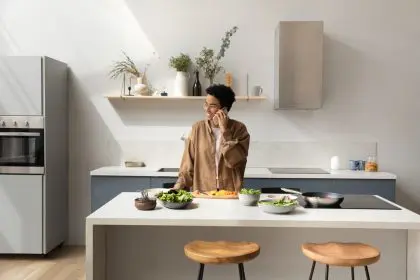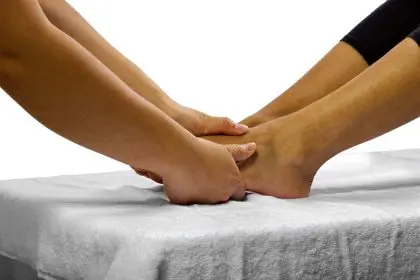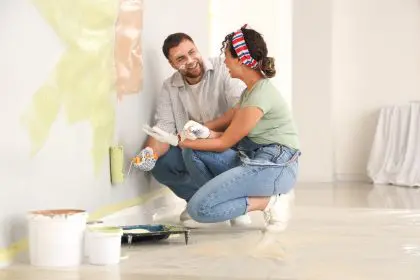The tiny home movement has taken the world by storm in recent years. As people seek to downsize, simplify their lives and reduce their environmental footprint, tiny homes offer an appealing alternative to traditional housing. These compact, efficient living spaces challenge conventional notions of what a home should be, offering a unique blend of affordability, sustainability and minimalism. But what exactly are tiny homes, and why are they gaining such popularity? In this article, we’ll delve into the key aspects of tiny homes, exploring their benefits, challenges and what you need to consider if you’re thinking about joining the tiny home movement.
The appeal of tiny homes
Tiny homes typically range from 100 to 1000 square feet, offering just enough space to live comfortably while encouraging a minimalist lifestyle. Here are some of the main reasons why people are drawn to tiny homes:
- Affordability: One of the most significant advantages of tiny homes is their affordability. With the cost of traditional housing soaring, tiny homes present a cost-effective alternative. Building and maintaining a tiny home is significantly cheaper than a conventional house, making homeownership accessible to more people.
- Sustainability: Tiny homes are often designed with sustainability in mind. They require fewer building materials, consume less energy and often incorporate eco-friendly features such as solar panels, composting toilets and rainwater harvesting systems. Living in a tiny home can significantly reduce your environmental footprint.
- Simplicity and minimalism: The tiny home lifestyle promotes simplicity and minimalism. With limited space, you must prioritize what is truly important, leading to a decluttered and more intentional way of living. This can reduce stress and improve overall well-being.
- Mobility and flexibility: Many tiny homes are built on wheels, offering the freedom to move and travel. This mobility allows homeowners to explore different locations and adapt to changing circumstances without the need to sell their home and buy a new one.
Key considerations before going tiny
While the benefits of tiny homes are compelling, it’s important to consider the potential challenges and requirements before making the transition. Here are some key factors to keep in mind:
- Zoning laws and regulations: One of the biggest hurdles for tiny home enthusiasts is navigating local zoning laws and building codes. Regulations regarding minimum dwelling size, land use and whether tiny homes are considered permanent residences or RVs vary widely by location. It’s crucial to research and understand the regulations in your desired area before committing to a tiny home.
- Lifestyle adjustment: Living in a tiny home requires a significant lifestyle adjustment. The limited space means you’ll need to downsize your belongings and possibly adjust your daily routines. It’s important to assess whether you and your family can comfortably adapt to a smaller living space.
- Financing and insurance: Financing a tiny home can be more complicated than a traditional mortgage, as many lenders do not offer loans for tiny homes. Additionally, insuring a tiny home can be challenging, especially if it is mobile. It’s essential to explore your financing and insurance options thoroughly.
- Resale value: While tiny homes are gaining popularity, their resale value can be unpredictable. The market for tiny homes is still relatively niche, and selling a tiny home might take longer than a traditional house. Consider this factor if you plan to move on from your tiny home in the future.
Designing and building your tiny home
Designing and building a tiny home requires careful planning and creativity to maximize the use of space. Here are some tips to help you create a functional and comfortable tiny home:
- Efficient use of space: Every square inch matters in a tiny home. Utilize multifunctional furniture — such as foldout tables and sofa beds — to save space. Built-in storage solutions, such as under-stair storage and lofted sleeping areas, can help maximize your living area.
- Quality materials and craftsmanship: Invest in high-quality materials and skilled craftsmanship to ensure the durability and longevity of your tiny home. Poor construction can lead to issues down the line, such as leaks or structural problems, which can be costly to repair in a tiny space.
- Customization: One of the joys of building a tiny home is the ability to customize it to suit your personal needs and preferences. Whether it’s a cozy reading nook, a compact but fully equipped kitchen or a luxurious bathroom, tailor your tiny home to reflect your lifestyle and taste.
- Sustainability features: Incorporate sustainable features to reduce your environmental impact and increase the efficiency of your home. Solar panels, energy-efficient appliances and water-saving fixtures can make your tiny home more self-sufficient and eco-friendly.
Living the tiny home lifestyle
Adopting the tiny home lifestyle goes beyond just living in a smaller space; it involves embracing a new way of life. Here are some aspects of the tiny home lifestyle to consider:
- Community and connection: Many tiny home dwellers find a strong sense of community within the tiny home movement. Whether through online forums, local meetups,or tiny home villages, connecting with like-minded individuals can provide support and inspiration.
- Simplified living: The tiny home lifestyle encourages you to focus on what truly matters. With fewer possessions and distractions, you can prioritize experiences, relationships and personal growth. This simplified approach can lead to a more fulfilling and meaningful life.
- Financial freedom: The reduced cost of living in a tiny home can lead to greater financial freedom. With lower housing expenses, you can allocate more funds toward savings, travel or pursuing your passions. This financial flexibility can open up new opportunities and reduce financial stress.
- Environmental impact: Living in a tiny home allows you to significantly reduce your environmental footprint. By consuming less energy, producing less waste and using sustainable resources, you can contribute to a more sustainable future.
Going tiny
Tiny homes offer a unique and appealing alternative to traditional housing, with benefits ranging from affordability and sustainability to simplicity and mobility. However, it’s important to thoroughly research and consider the challenges and lifestyle adjustments that come with tiny home living. By understanding the key aspects of tiny homes and planning carefully, you can decide if this minimalist lifestyle is right for you. Embracing the tiny home movement can lead to a more intentional, fulfilling and environmentally conscious way of life, providing the freedom and flexibility to live on your own terms. Whether you’re looking to downsize, reduce your environmental impact or simply seek a new adventure, tiny homes offer an exciting and viable option for modern living.
This story was created using AI technology.

















